Córdoba is a small city with a lot to offer. Its mix of Roman, Islamic, and Christian history is visible everywhere from the Mezquita-Catedral to the narrow streets of the Jewish Quarter. Yes, you can see its main sights in a day, and this guide shows you how to make the most of your time without feeling rushed.
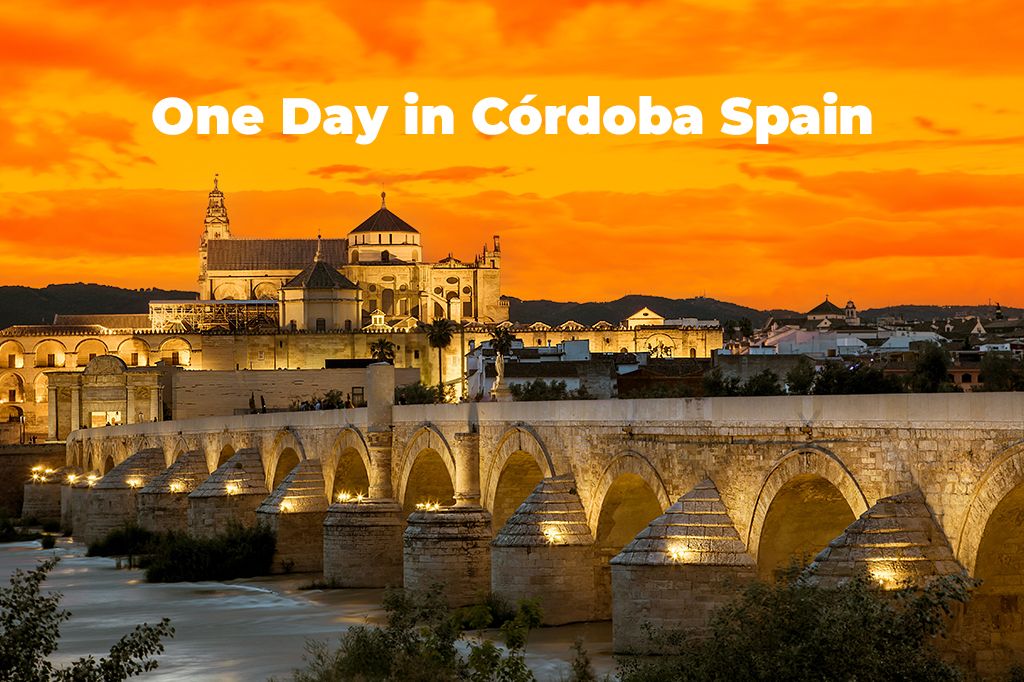
Picture by Saad Chaudhry on Unsplash
Why Córdoba Deserves a Spot on Your Spain Itinerary
Córdoba has a way of drawing you in slowly. It’s not flashy or loud, but its beauty is undeniable. At the heart of it all is the Mezquita-Catedral, a vast blend of Islamic and Christian architecture. Its rows of striped arches and the surprising cathedral rising inside speak to Córdoba’s layered past. Outside, the Jewish Quarter surrounds you with whitewashed buildings, balconies draped in flowers.
Córdoba’s compactness is part of its uniqueness. Within a short walk, you’ll cross the Roman Bridge, pass ancient city walls, and stumble upon hidden patios, each offering a glimpse into the city’s diverse influences: Roman, Moorish, Jewish, and Christian. The Alcázar’s fortress towers and peaceful gardens offer another window into the city’s history and a peaceful break from the sun.
There’s no need to rush in Cordoba. Every corner holds a bit of craftsmanship, a piece of poetry in stone, or a sudden view that stops you in your tracks. Córdoba doesn’t shout for your attention, but it stays with you long after you’ve left.
Is One Day Enough in Cordoba?
Yes, one day in Córdoba is enough to see the main sights and get a feel for the city. But if you have more time, you can explore more places and enjoy the city at a slower pace. Also, staying overnight lets you experience the city in the evening when it’s quieter and more relaxed. So, while one day is enough for a quick visit, staying longer makes the trip better.
How to Spend One Day in Córdoba, Spain
Morning: History Before the Crowds
A visit to Córdoba should begin early at the Mezquita-Catedral, before the crowds arrive. From Monday to Saturday, entry is free between 8:30 and 9:30 AM for individual visitors, not for groups. Arriving by 8:20 AM is the best way to secure a spot without waiting. Use the Puerta de Santa Catalina or another main gate to enter. During this early window, the cathedral section may be closed for Mass preparations, and Sunday or holiday hours can differ, so it’s worth checking ahead.
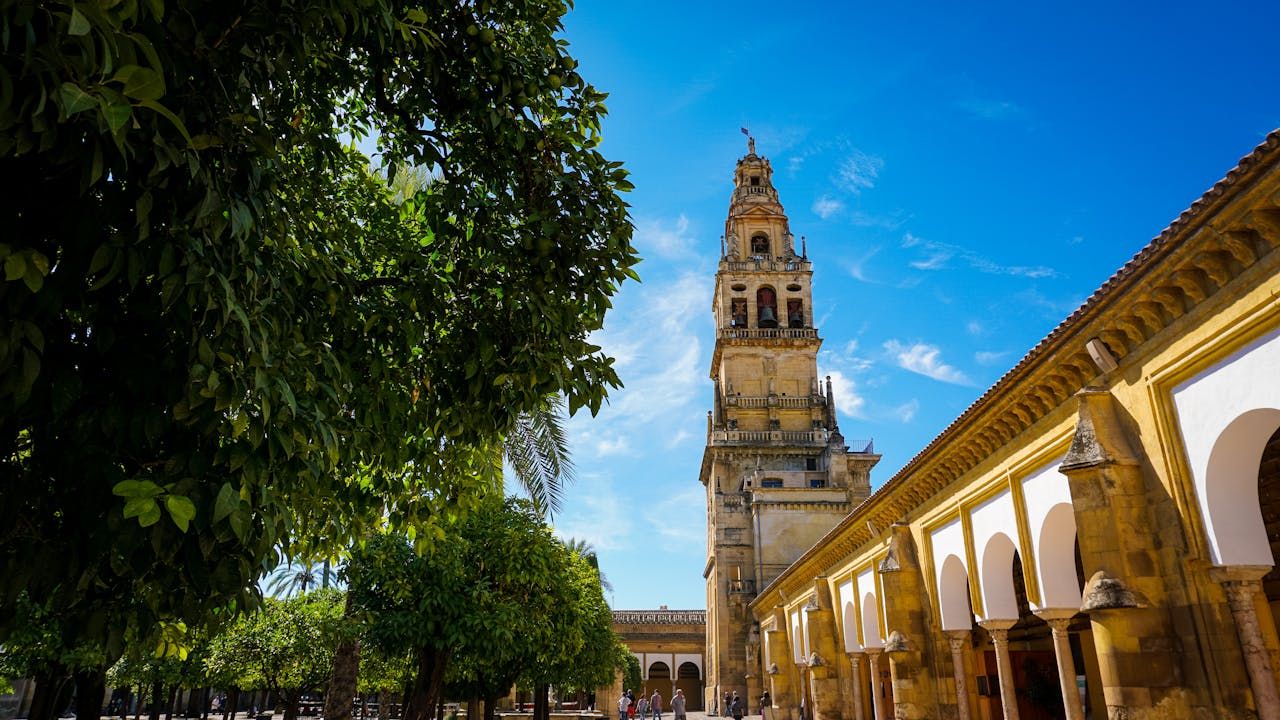
Photo by Tudor Sorin
This quiet time allows you to take in the architectural and religious fusion of the building without distractions. Originally built as a mosque in the 8th century by the Umayyads, the structure includes a hypostyle hall with over 850 columns and double arches made from stone and brick. The mihrab, an ornate prayer niche, is decorated with marble and mosaics. After the Christian conquest in the 13th century, a cathedral nave, choir, and chapels were added directly to the existing mosque. The bell tower was built over the old minaret. Islamic elements like horseshoe arches and geometric designs now stand beside altars and chapels, showing two religious traditions in one structure.
The best angles for early-morning photography are easy to find when the space is nearly empty. In the Patio de los Naranjos, you can photograph the bell tower with soft light from the east. Inside, the forest of columns looks most impressive from the central aisle, which offers symmetry and depth. The mihrab is ideal for close-up shots of mosaics and stonework. The transition zone between the mosque and the cathedral lets you frame both Islamic arches and the Christian altar in a single image. A wide-angle lens works well to capture the scale of the interior, and the golden hour light enhances the colors and shadows.
Adding a short guided tour can give more meaning to the visit. Most tours last 1 to 1.5 hours and include entry, a professional guide, and audio headsets. These standard group tours explain the building’s evolution and highlight key features. Some combined city tours also include the Jewish Quarter and Alcázar and last about 2–3 hours. Private tours offer flexibility and a more personal experience, but cost more. Night tours like El Alma de Córdoba use lights and audio to offer a different view of the monument.
A guided tour isn’t always necessary. If you prefer to move at your own pace or want to focus on photography, it might be better to skip it. Audio tour apps are a good alternative for independent travelers. These cover the main areas such as the Patio de los Naranjos, the mihrab, the nave, and the chapels and are available in several languages. Many can be used offline and include a map and clear instructions. To use one, you’ll need a smartphone, headphones, and a charged battery.
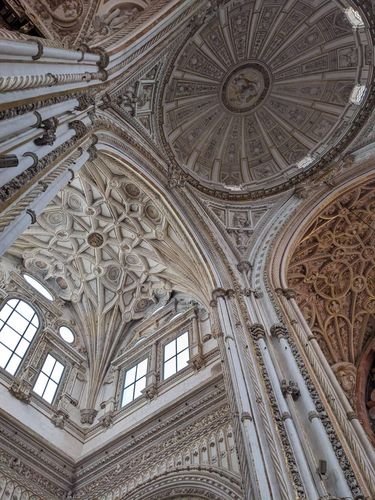
Photo by Adam Marikar on Unsplash
Standing under the arches of the Mezquita-Catedral gives a clear sense of how the building has changed over time. The repeated columns and arches create a pattern that leads your eye across the space. Moving from the original mosque to the later cathedral, you can see the contrast in materials, layout, and decoration. The sound is soft, and the light shifts with the architecture, making the history feel present and real.
Midday: Walk, Eat, and Wander
By midday, the light over the Guadalquivir River sharpens, making the Roman Bridge one of Córdoba’s most striking sights. While it’s often photographed for its symmetry and views of the city skyline, the bridge is more than just a scenic backdrop. Built in the early 1st century BC, it was part of the Via Augusta, a major Roman road connecting Rome to Cádiz. For centuries, this structure supported the movement of goods, soldiers, and information across southern Spain. Its original 16 arches, now reduced to 13, were engineered for durability, with several sections later rebuilt during the Islamic period and further restored in the centuries that followed.
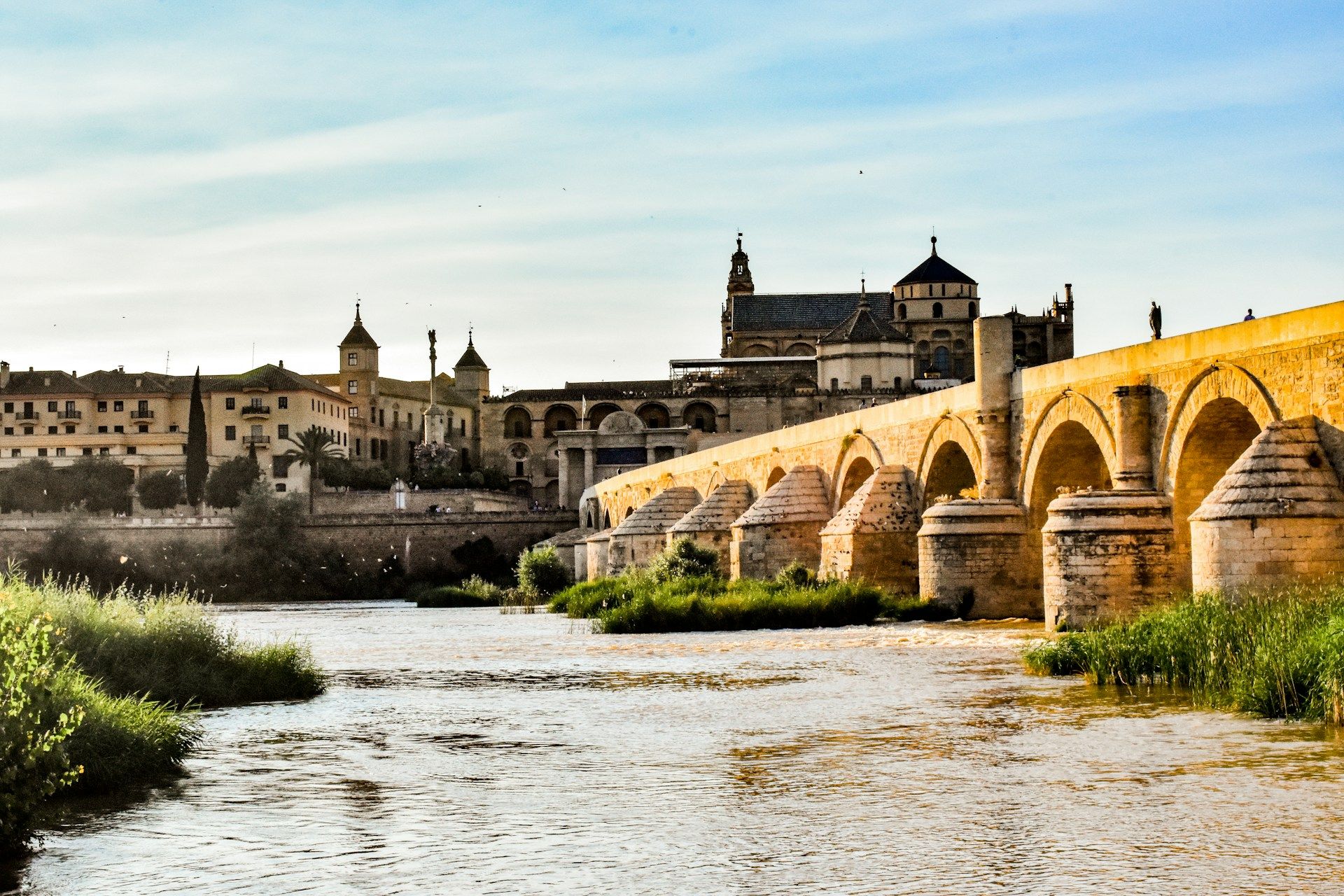
The bridge was Córdoba’s only river crossing for almost 2,000 years, anchoring the city’s position as a trade hub between the Mediterranean and Atlantic coasts. Its role in commerce and travel shaped the region’s economic and cultural development. During the 13th-century Reconquista, armies passed over it. Merchants and travelers followed the same path for generations. Each phase of history left a visible mark: Roman foundations remain under Moorish stonework, while Christian-era additions include the Puerta del Puente, a Renaissance gate at the northern end. At the southern end stands the Calahorra Tower, built in the 12th century by the Almohads to defend the bridge. Today, it houses a museum focused on Córdoba’s cultural history.
Crossing the bridge on foot gives a more complete sense of its purpose and place in the city. Rather than just snapping a photo, walking its length reveals the scale of the architecture and the layers of influence that shaped it. Pedestrian-only access makes it easier to focus on the details, stone patterns, restored sections, and the views of both riverbanks. From the center of the bridge, you can see the Mezquita-Catedral on one side and the Calahorra Tower on the other, both tied to the bridge’s long life as a connector.
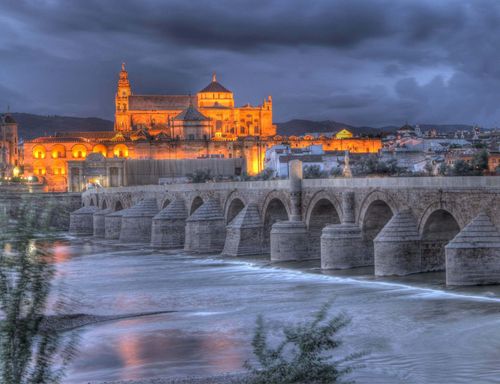
Photo by Geoff Harrison on Unsplash
Though it now serves modern purposes (linking neighborhoods and providing a popular walking route) the bridge remains part of Córdoba’s UNESCO World Heritage Site and a symbol of its layered identity. Its appearance in Game of Thrones as the Long Bridge of Volantis added to its international profile, but its true value lies in centuries of uninterrupted use. Whether as part of an empire’s highway or a local footpath, the Roman Bridge has remained central to the movement of people, goods, and ideas across Andalucía.
Afternoon: A Quieter Kind of Grandeur
The Alcázar of the Christian Monarchs in Córdoba was built in 1328 by King Alfonso XI on the site of earlier Roman, Visigoth, and Islamic buildings. It served as a royal residence for Queen Isabella and King Ferdinand in the 15th century. The building also functioned as a military headquarters, a prison, and the seat of the Spanish Inquisition for almost 300 years. Visitors should focus on the four main towers: the Tower of the Lions, the Main Keep, the Tower of the Inquisition, and the Tower of the Doves. Inside, the halls have Gothic stone ceilings, and the courtyards and gardens show Mudéjar style with water channels and ponds. The Hall of the Mosaics displays Roman mosaics found under the city. The Arab baths under the Main Keep have three vaulted rooms with star-shaped openings. A Roman sarcophagus from the early 3rd century is also on display. The gardens and courtyards are quieter than the main halls, and if time is limited, the baths and mosaic hall can be skipped.
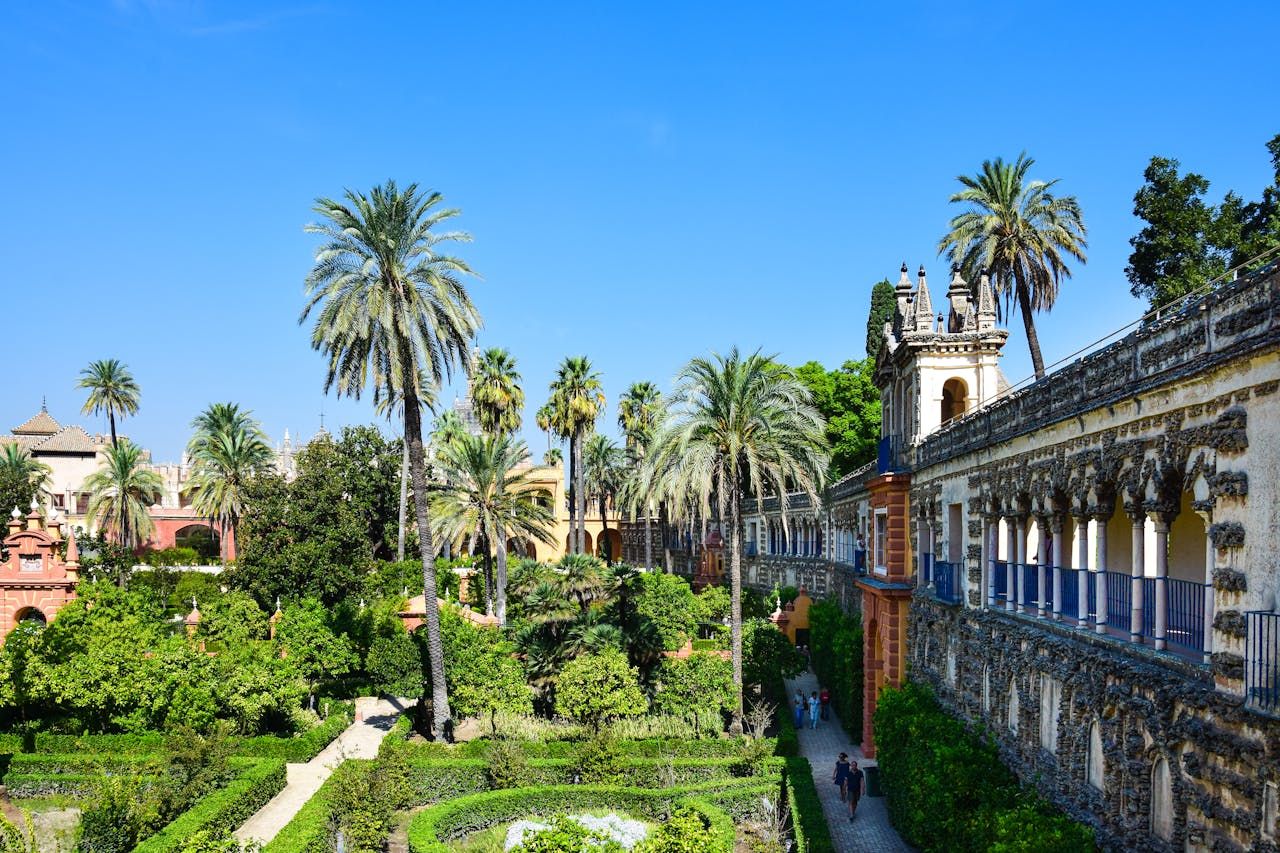
Photo by AXP Photography
The Alcázar becomes crowded around midday, especially in peak seasons. To avoid this, visit the gardens first or later in the afternoon. The gardens offer shaded areas and water features for a calm experience. It is best to book tickets in advance because entry is limited to 30 minutes before the scheduled time.
The Alcázar is linked to important history. Christopher Columbus met Queen Isabella and King Ferdinand here in 1486 or 1487 to ask for support for his voyage west. The monarchs kept Columbus employed but delayed approving his trip until after Granada was conquered in 1492. The fortress was the headquarters of the Spanish Inquisition from 1482 to 1821. Parts of the building, including the Arab baths, were used for interrogation and torture. Boabdil, the last Nasrid ruler of Granada, was imprisoned here in 1483 before surrendering Granada. The Alcázar was also used as a military garrison by Napoleon’s troops in the 19th century and later as a prison until becoming a national monument.
Compared to Seville’s Alcázar, which is larger and more ornate with extensive Mudéjar, Gothic, Renaissance, and Baroque details, Córdoba’s Alcázar is smaller and has a stronger military character. Its history is closely connected to the Reconquista, the Spanish Inquisition, and early modern Spain. The gardens are smaller but peaceful and reflect Mudéjar style. For visitors interested in Christian monarchs, the Reconquista, and the Inquisition, Córdoba’s Alcázar offers a focused experience with fewer crowds. Its location near the Mezquita-Catedral and Roman Bridge makes it easy to include in a day visit.
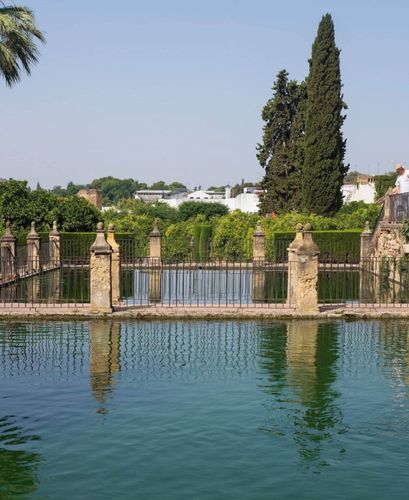
Photo by Luís Cardoso on Unsplash
The Jewish Quarter, or Judería, is northeast of the Mezquita-Catedral. It was home to Córdoba’s Jewish community from the 10th to the 15th century and is part of the UNESCO World Heritage historic center. The area follows Islamic urban patterns with narrow streets such as Deanes, Manríquez, and Judíos. The Córdoba Synagogue, built in 1315 by Isaac Moheb, is one of the few medieval synagogues preserved in Spain. It has a simple exterior and Mudéjar-style decoration inside with geometric patterns and inscriptions. Other important sites include the Chapel of St. Bartholomew, the Almodóvar Gate marking the quarter’s boundary, and Plaza de Tiberíades with a statue of Maimonides, a Jewish philosopher and physician born in Córdoba in 1138. Museums like Casa de Sefarad and the Andalusian House show Sephardic culture and alchemy. The quarter reflects the complex history of coexistence, taxation, and segregation, showing the effects of the 1391 anti-Jewish revolts and the 1492 expulsion.
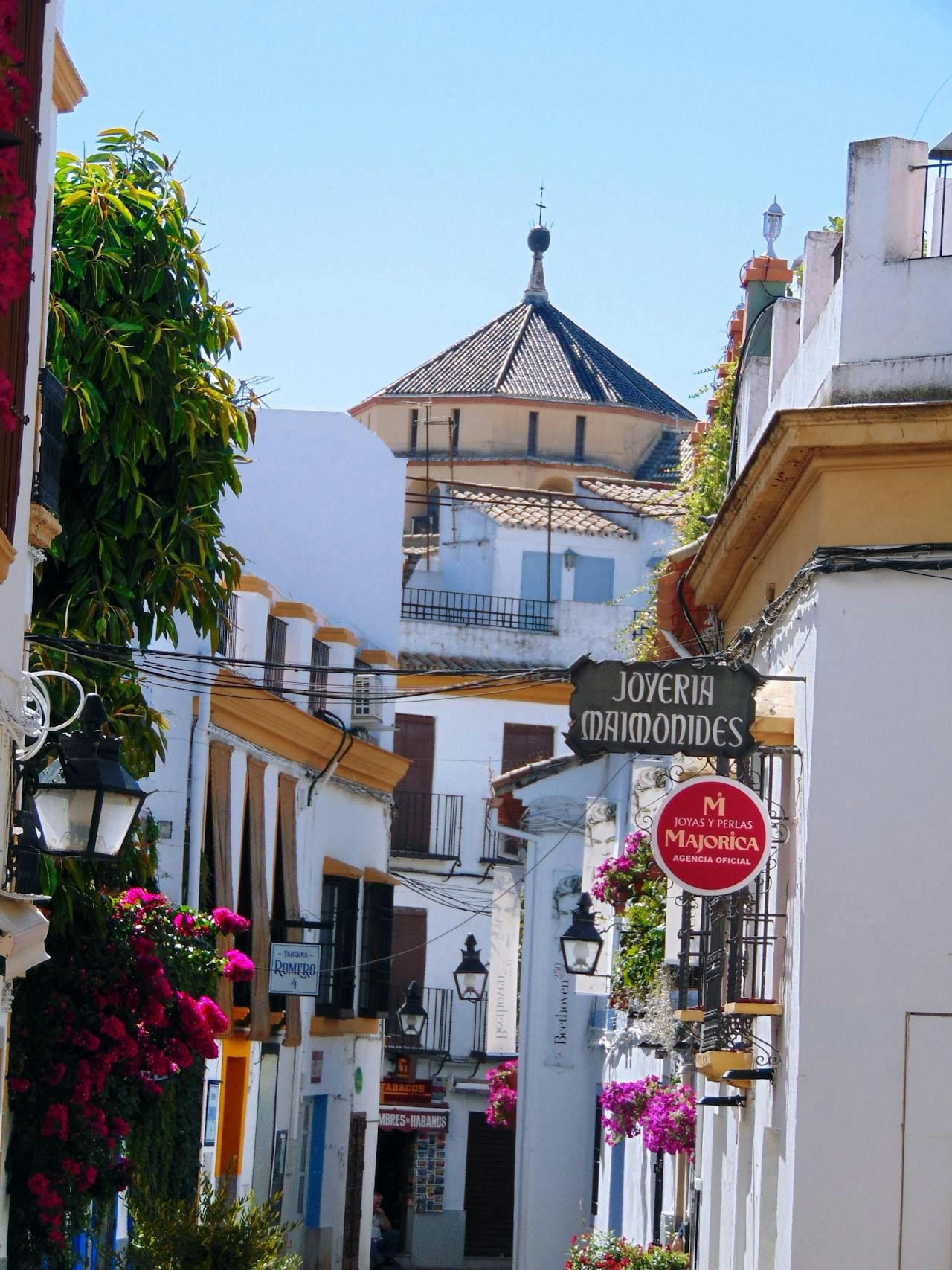
Photo by Javi Moreno
Some visitors skip the Jewish Quarter to focus on major landmarks, but it is important to understand Córdoba’s diverse history. The narrow streets and historic buildings reveal the life and culture of the Jewish community over the centuries.
Hidden Gems for the Late Afternoon
Calleja de las Flores is a narrow alley in the Jewish Quarter near the Mezquita-Catedral. It ends in a small plaza with a fountain and frames the mosque’s bell tower. The white walls have flower pots. Early morning around 10 AM is the best time for photos without crowds or backlight. The alley has been decorated with flowers since at least the 1930s and is free to visit.
The Palacio de Viana is a historic palace a short distance from the city center. It is known for twelve courtyards showing different architectural styles. The palace has rooms with period furnishings and art. A 90-minute visit gives insight into Córdoba’s aristocratic past and a quiet place to walk in gardens and rooms.
Hammam Al Ándalus is a traditional Arab bathhouse with hot, warm, and cold pools, steam rooms, and massages. A visit usually lasts about an hour. It offers a chance to experience Córdoba’s Islamic heritage and relax after walking. Booking in advance is recommended during busy times.
These options let visitors extend their afternoon with a quick photo stop, a cultural visit, or a relaxing spa break, depending on time and interests.
Tips That Save Time and Stress
Córdoba’s compact historic center makes it easy to explore on foot, letting you soak in landmarks like the Mezquita-Catedral, Roman Bridge, Alcázar, and the Jewish Quarter without rushing. Walking is the best way to get around, but for longer distances or spots outside the center, city buses run frequently from early morning until late evening. If you want a quicker hop between sights, the hop-on hop-off tourist bus covers main attractions with helpful audio guides. Just keep in mind that buses come every 30 to 60 minutes, so plan accordingly.
If you’re arriving for a quick day trip, luggage storage is a lifesaver. Lockers at Córdoba’s train station or some local hotels allow you to explore hands-free. Just check ahead on availability and hours to avoid surprises.
What to wear depends on when you visit. Summers get seriously hot (above 35°C (95°F) so lightweight clothes, sun hats, and sunscreen are musts. Try to visit early or late in the day to dodge the worst heat, and stay hydrated. Spring and autumn bring milder weather, perfect for layering, while winters are cool enough to need a jacket but still pleasant for walking.
Stay Connected While Exploring Córdoba
Córdoba is a city best experienced on foot and at your own pace. But for that kind of travel freedom, you’ll need mobile data, without worrying about roaming fees or finding Wi-Fi. Try a free eSIM from Yoho Mobile and instantly get mobile data in Spain (and over 190+ countries) with just a few taps, no SIM card swaps, no contracts. When you’re ready to upgrade, use code YOHO12 for 12% off any eSIM plan.
Can you do Córdoba on a day trip from Seville or Madrid?
From Seville, high-speed trains zip you to Córdoba in about 45 minutes, so including travel time, expect around 1.5 to 2 hours each way. This gives you roughly 4 to 6 hours to explore, a solid day trip. From Madrid, the train takes about 1 hour 45 minutes, but with station transfers, plan on closer to 2.5 to 3 hours each way. A day trip is doable but means less sightseeing time (3 to 4 hours). Booking tickets early and using public transport or taxis in Córdoba will keep your day running smoothly.
